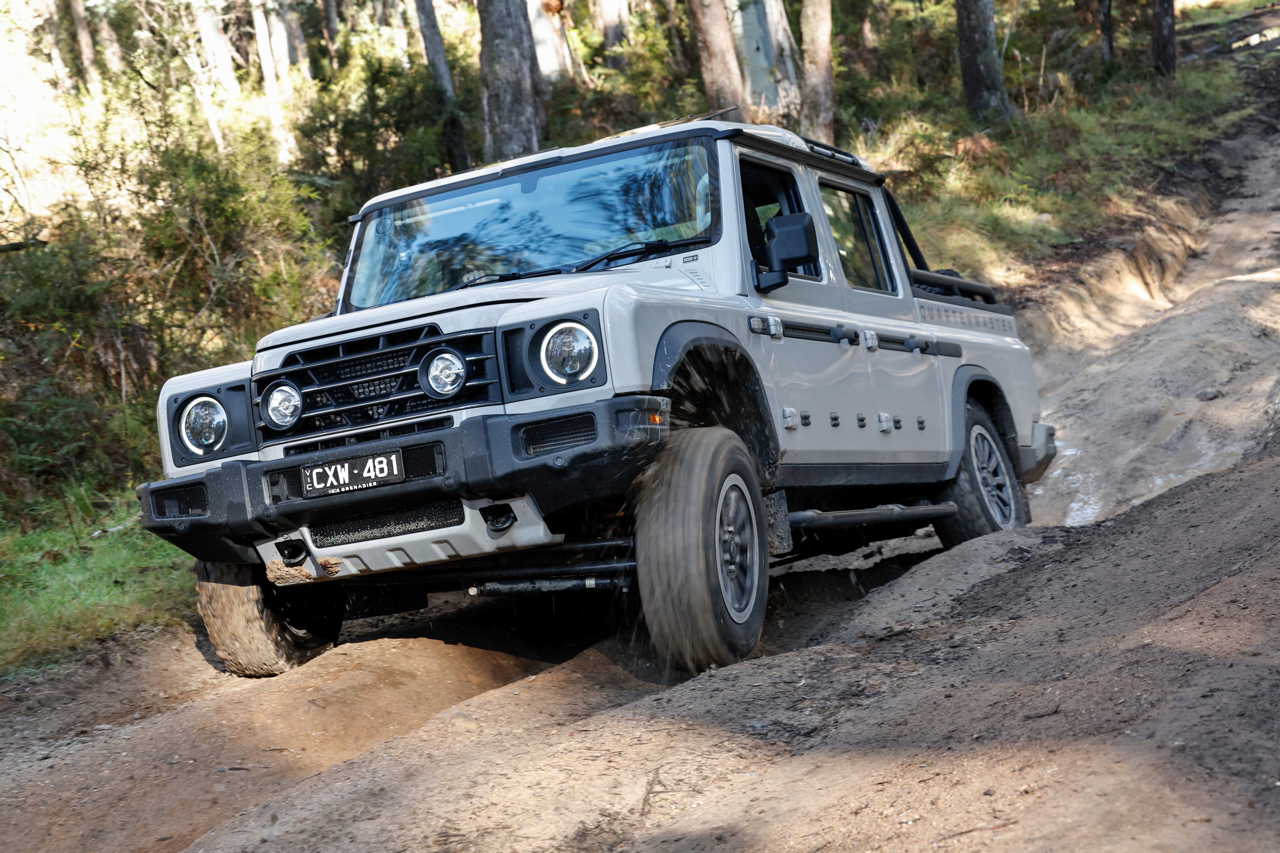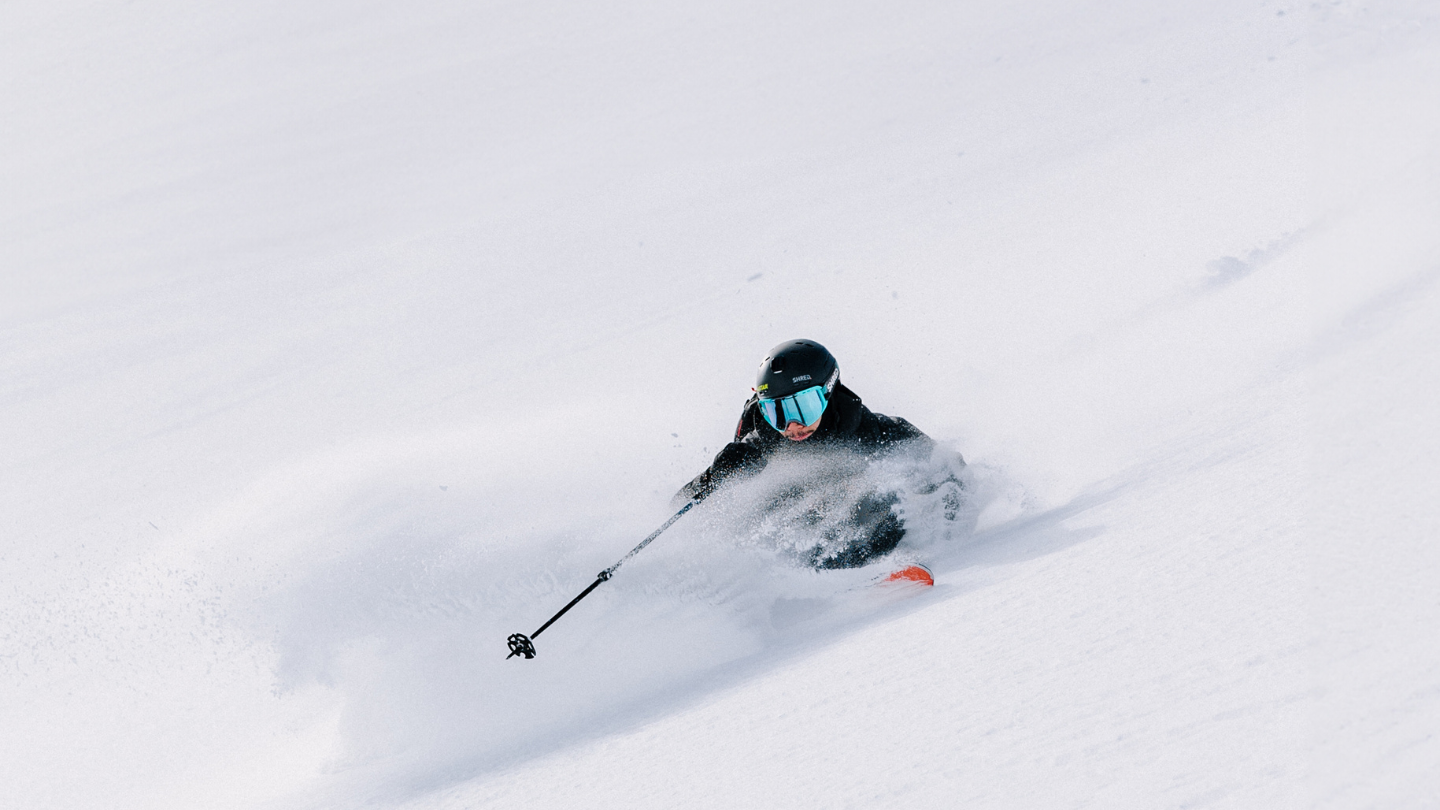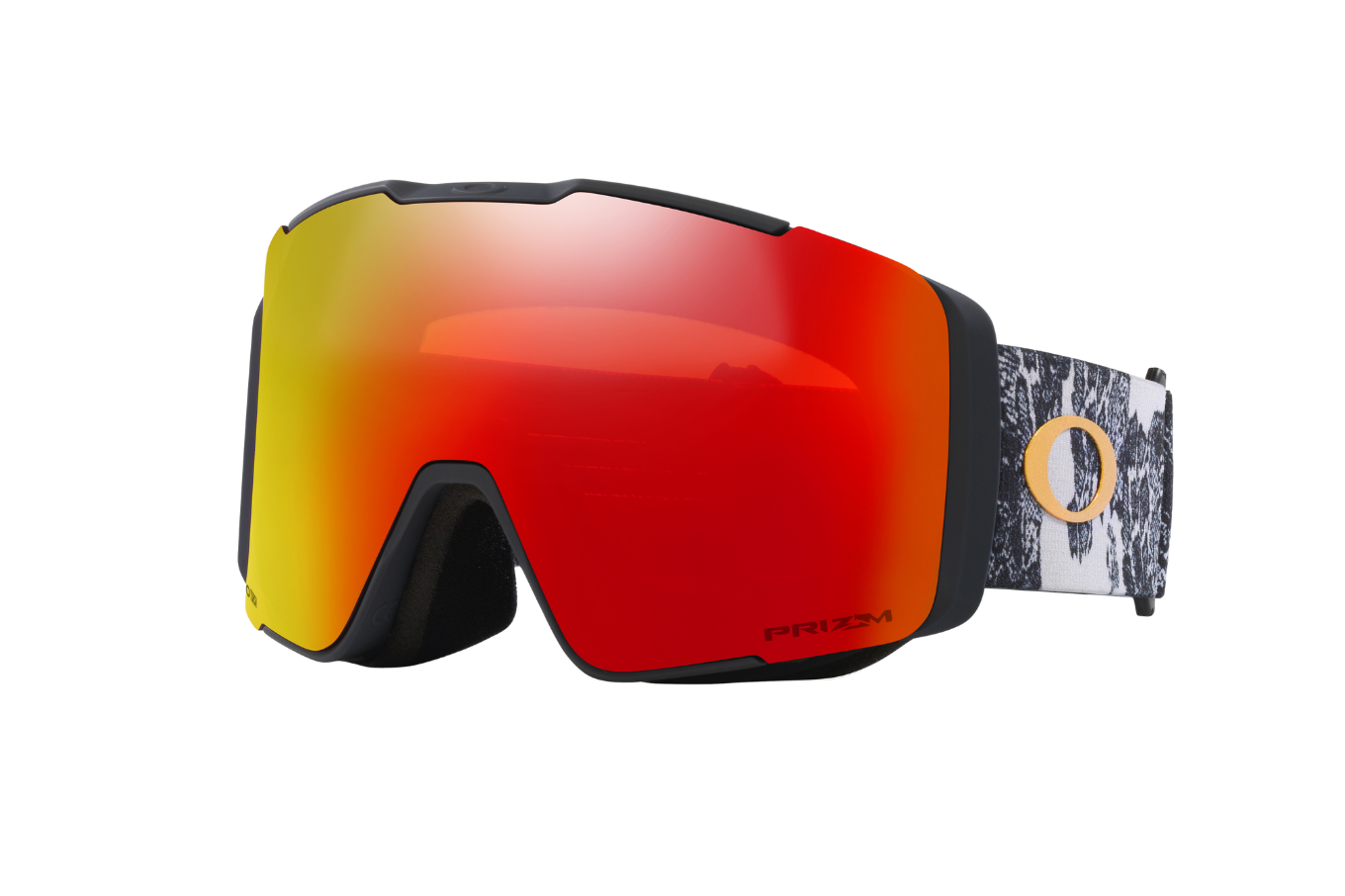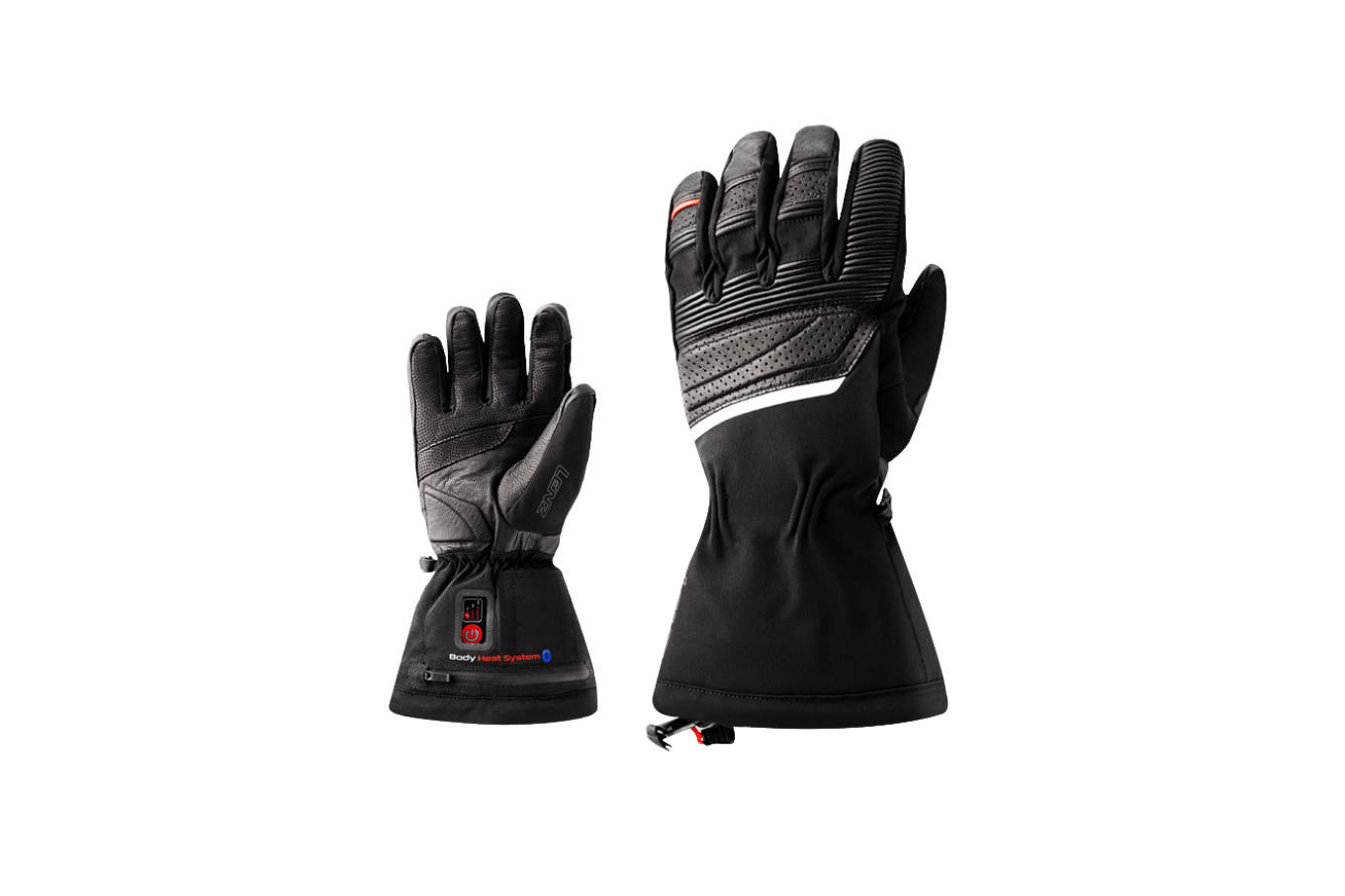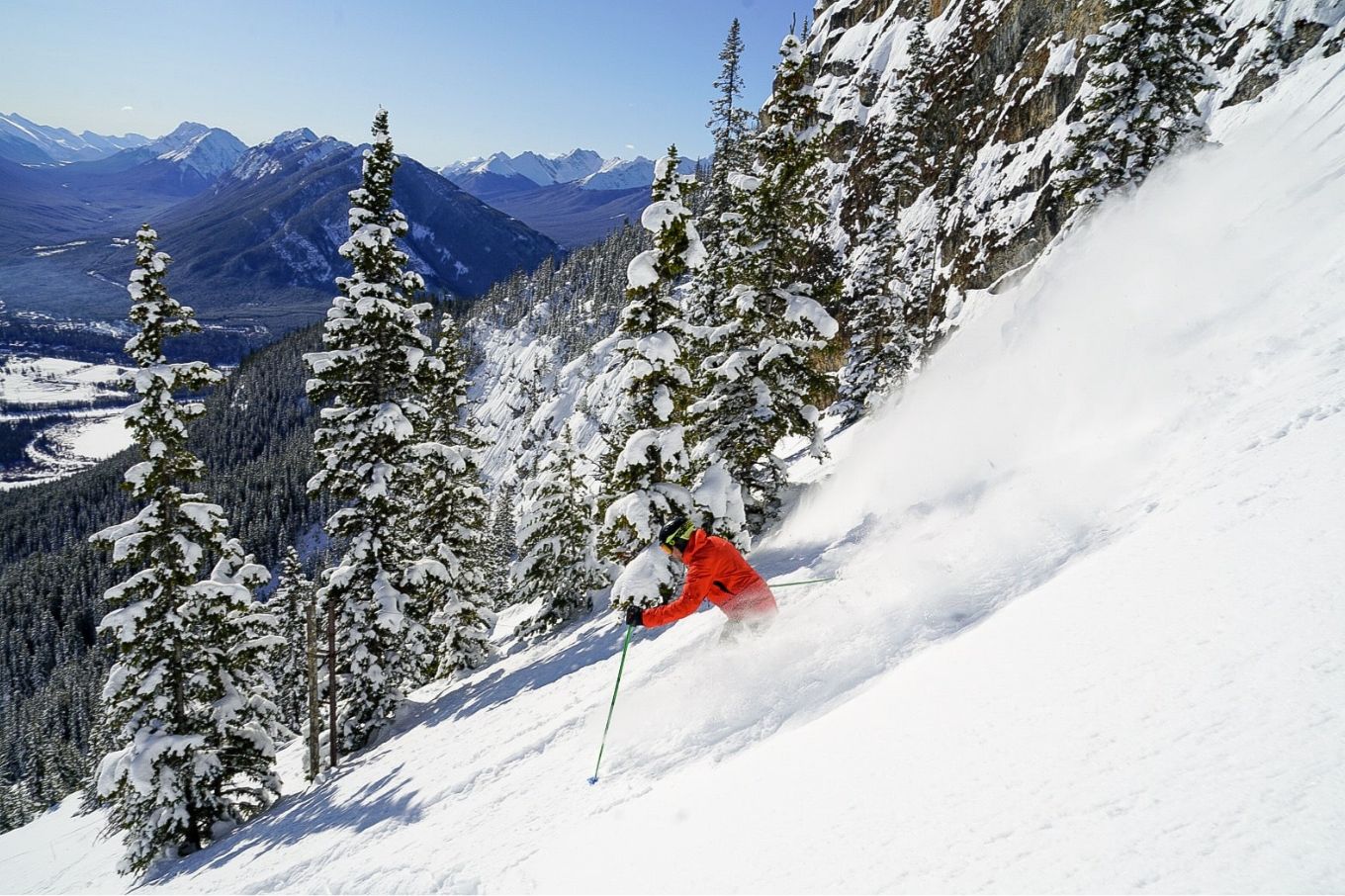Ortovox recently unveiled what may well be the future of avi transceivers, especially for the recreational market: the new Diract VOICE model with gamechanger voice guidance built in. It’s like having Siri tell you which way to search.
Given that most recreational backcountry skiers and riders will never actually have to use their beacons for a search, actually having to do so naturally provokes a fair amount of panic/anxiety in the user who does have to do so. So anything that makes it easier should be a big advantage.
The Munich based company with a 40 year track record of making great gear showed the new Diract Voice model at the recent ISPO snow industry trade fair, with a scheduled release to consumers in September.
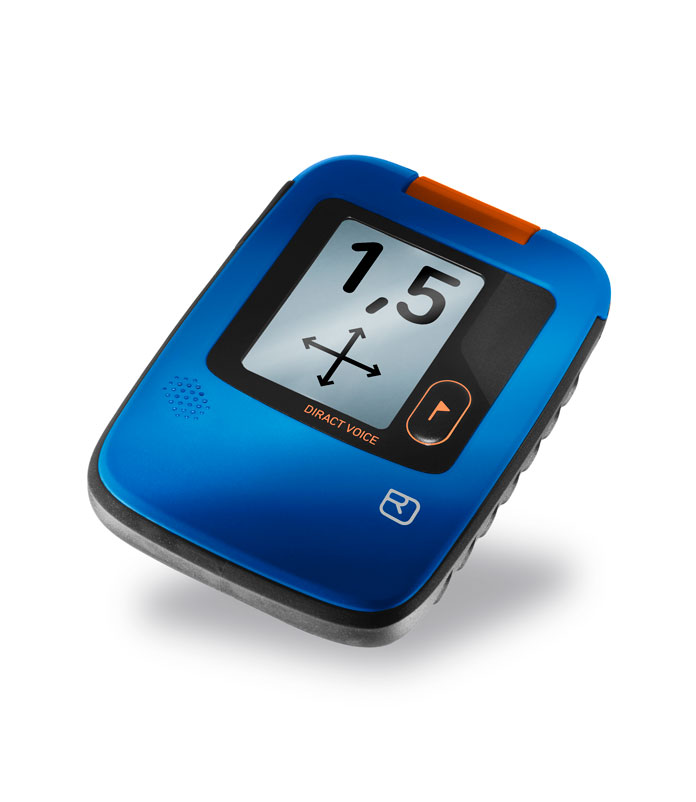
This is what they had to say about it.
“Extremely simple and intuitive to operate, 2.3cm slim, 210g light and the world’s first avalanche transceiver with voice navigation from ORTOVOX. The DIRACT VOICE guides users with clear verbal instructions and – thanks to its logical, streamlined design – is extremely simple to use.”
DIRACT VOICE – at a glance:
- Talks: navigation through clear spoken instructions
- Helps: intuitive operation for gaining life-saving seconds
- Protects: smart antenna technology for optimum range
- What is so special about the new DIRACT VOICE from ORTOVOX?
What makes the DIRACT VOICE so special is the voice navigation for avalanche search and rescue, the fully streamlined design for intuitive operation, and the maximum clarity and reliability of the display.
- What was the guiding principle behind the development of the new DIRACT VOICE?
The DIRACT and the DIRACT VOICE can be described in just one word: intuitive!
In an ORTOVOX survey, 45% of ski tourers said they had little or no knowledge of avalanches or what to do in the event of an avalanche. In an avalanche, every second counts. This puts the people involved under extreme stress, which elevates their physical performance but not their cognitive capacity. Automatic actions are helpful in situations such as these. The less you have to think, the better. This is exactly the concept the DIRACT VOICE is based upon. An intuitive, streamlined design and voice support provide rapid help in every phase of the search, when every second counts.
- Who is the new DIRACT VOICE designed for?
Intuitive operation with no distractions and a focus upon the essentials are what characterize the DIRACT VOICE. The avalanche transceiver is thus designed not only for trained, experienced mountaineers, but also for beginners who wish to have an uncomplicated avalanche transceiver with them in the mountains.
- What makes the DIRACT VOICE better than other devices on the market?
The DIRACT VOICE is the world’s first avalanche transceiver with integrated voice navigation.
Compared to other devices on the market, it has an exceptionally stable display from first reception. This reduces stress in an emergency and enables a faster search!
Other highlights include a full-graphic, extra-large screen with 360-degree real-time display and excellent readability even in extreme lighting conditions.
The patented Smart Antenna technology analyzes the device’s location in the avalanche and automatically switches to the best transmitting antenna so the user can be found more quickly.
The low-temperature rechargeable battery is long-lasting and environmentally friendly, and will reliably provide the device with power even at -20°C. Disposable batteries are becoming obsolete. And unlike a disposable battery, a rechargeable battery can’t leak.
Furthermore, the carrying system comes with an integrated RECCO® reflector. This back-up increases the wearer’s chances of being found.
- What languages are available for the DIRACT VOICE?
There are nine language settings for the DIRACT VOICE:
German, English, French, Italian, Spanish, Norwegian, Swedish, Czech and Dutch.
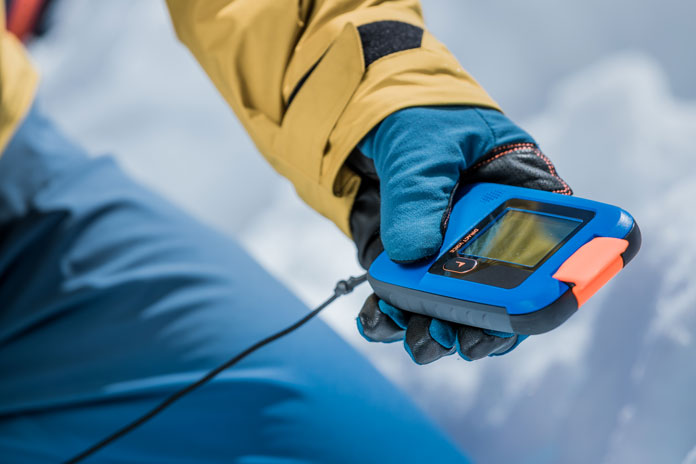
How exactly does the voice navigation work?
The DIRACT VOICE talks to the user as they search for burial victims. The voice instructions only sound when useful.
From the moment the search starts (switchover to search mode) until the moment the victim is found, the device provides clear and simple spoken instructions, such as: “Walk forward!” or “Go down to the snow surface!”. There are basically two types of spoken instructions: direct instructions (e.g. “Go down to the snow surface!”) and direction corrections (e.g. “Keep right”).
Direct instructions can be communicated to the searcher/s very well using voice instructions. In comparison, additional symbols on the display would either not be noticed in an emergency or do nothing but cause confusion.
Voice direction corrections will only sound if the searcher is not following the directions on the display.
The language can be set the first time the device is switched on or via the ORTOVOX app.
- What can I expect from “voice navigation”?
The device directs the searcher using spoken instructions – similar to a coach standing next to the searcher, telling them what to do.
- What is the maximum range?
The DIRACT VOICE has a search strip width of 50m. ORTOVOX has deliberately decided not to provide information about the maximum range because only the search strip width is relevant in an emergency.
The maximum range does not provide information about how stable (or unstable) the display is at the point of first reception. However, whether the signal can reliably be followed for the first few meters or, for example, is lost when the device is not pointed in the exact direction shown on the display (which is almost impossible to do in an avalanche) makes a great deal of difference to the search.
- Why doesn’t the DIRACT VOICE have a broader search strip?
50m is half the length of a soccer field* and is very far if two people are trying to communicate with one another across this distance. The average size of an avalanche is 80m x 100m. This size can easily be covered by the DIRACT VOICE by walking along two search strips.
One key aim in the development of the DIRACT VOICE was not maximizing the range, but ensuring the avalanche transceiver provides reliable, stable instructions from first reception.
The DIRACT VOICE has been clearly focused upon intuitive operation and reliability, so that users can concentrate upon that which is important, and are not additionally stressed by interference (such as unstable reception) in the already extremely stressful event that is an avalanche.
*(or comparable to one rope length in alpine climbing)
- What is the search strip width exactly?
The search strip width is the distance between the two search strips the user walks along on an avalanche deposit zone.
So for a search strip width of 50m, the distance between the two search strips should be no more than 50m.
- Why does the signal search sometimes show a 20-meter instead of 50-meter search strip width?
The DIRACT VOICE constantly analyzes the radio signal situation during the search. If external interferences (e.g. smartphones, smart watches, action cameras, power lines) are identified, these are suppressed as much as possible. If the interference is too strong, the recommended search strip width will be reduced to 20 meters accordingly. Once the source of interference has been removed or switched off, the search strip width will once again increase to 50 meters.
This mechanism can arise with increased frequency in indoor spaces or near current-carrying wires or installations.
- What is the standby mode for?
STANDBY mode can be activated by rescuers involved in the rescue (making an emergency call, shoveling, probing, etc.) but are not carrying out an avalanche transceiver search themselves, and would nevertheless like to be found in the event of a secondary avalanche. As long as the user is not buried, the STANDBY mode will suppress transmission, which means it does not interfere with the avalanche transceiver search being carried out by others.
In the event of a burial by a secondary avalanche, the DIRACT VOICE senses a lack of movement and automatically activates the transmit function, allowing the user to be found. This is the same as the usual secondary avalanche function, which is active in search mode.
- Can the transmit function of a DIRACT VOICE be inadvertently switched off when carried?
The DIRACT VOICE has the following interaction options: Switching the device on/off and changing between the transmit and search functions.
The device also has a STANDBY mode that activates the secondary avalanche function, whereby transmit mode is automatically activated in the event of an avalanche burial.
The ON/OFF button is sunk into a protected recess at the back of the device and is also covered by the orange toggle switch when in transmit mode. To turn off the device, the ON/OFF button must be pressed and held for at least 3 (but max. 5) seconds. The flagging button on the front of the device must then be pressed within 5 seconds. If the timing and sequence is not followed exactly, the device will not switch off.
The user can switch between the transmit and search modes by flipping the toggle switch 180°. The integrated shape and stiffness of the toggle switch protect it against involuntary activation.
This mechanism reduces the possibility of involuntarily exiting transmit mode to an absolute minimum.
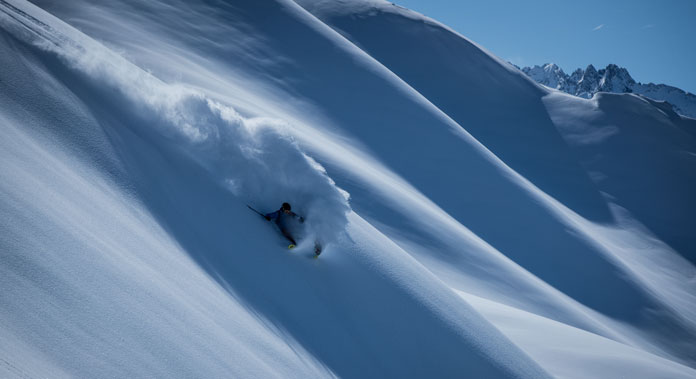
What we think of the new Ortovox Diract
As typical long term transciever users, who have never actually had to use our beacons in a real life and death situation despite carrying them for 30 years or so whenever neccessary, all the above sounds reasonable enough.
The prevalence of voice technology in daily life keeps growing exponentially, to the point where it is intuitive for younger generations, so it’s a natural progression to have it in an emergency situation like an avi search.
Every time you go heli or cat skiing or riding, or out with a reputable back country outfit, the transciever briefing is always the prelude to heading out. Depending on the company and the quality of the guides, these briefings may be very useful, or not much.
Practice won’t make perfect, but it obviously helps, and companies like Ortovox and BCA have networks of training facilities at many worldwide locations nowadays.
Doing courses is the next logical step, with plenty of those available most places too.
There is no big price premium: Ortovox will have the new Diract VOICE and a regular Diract model. Most casual users will likely opt for the VOICE.
With all things back country exploding in popularity since COVID availability may be an issue, but for downunder readers the local Ortovox distributors Everest Sports are hopeful of having stock in September. We’ll keep you posted.
While very few people have yet got to test them, we asked some long term guides what they thought of the concept.
Ross Carty from NOASC has been guiding in Hokkaido for 30 years. His company run avi course in Niseko too – a great thing to add to your Japow schedule, ideally at the start of a trip.
“We use SOS, Tracker DTS, Ortovox, and Mammut Pulse Barryvox. Yes, ease of use is the most important, as most people do not have a lot of experience and in the moment a lot is going on. To some people it is all too overwhelming when use is not simple.”
“More and more people use speech to text, so I think it would help some people. Also stuffing around with gloves off and on sometimes is time consuming and cumbersome” Carty says.
John Morrell from Backcountryski Japan is pretty much the original ‘gaijin guide’, with 40 odd years in central Hokkaido! He has done more than anyone to put the Tokachi Mountains on the map as one of the World’s best, most consistend BC powder destinations.
“It certainly looks like a game changer. I use ARVA Eco 3 & 4. Simple, 3 antenna device that works every time in scenarios. We have never used them in anger though. Only down side would be their range slightly less than the popular BCA 2 and 3 but more than adequate for Japan.”
Morrell is just packing up early at his Tomamu village store after the great snow but almost no clients winter there. He will be back next year, and it’s hard to beat getting out with him and/or his regular fellow guide Tim Macartney-Snape.
Ross McSwiney is Japan Operations Manager for White Room Tours, who run major guiding operations in Japan and Australia, including avi course in both countries (we’ll have more on those shortly). He is also a patrol senior trainer at Thredbo, having worked as a volunteer patroller there continously since 1996. For his part in a rescue incident at Hakkoda back in 2007 he and his fellow rescuers received a bravery medal (The Medal Of Red Ribbon) from the Japanese Government and also a bravery citation by the Australian Government. So he knows more than most about theory and practice of avalanches, and their terrible consequences.
He makes some great points here.
- A logical step in development which will assist the average BC user with limited experience. However, the second part of that sentence is concerning. As per your article 45% of BC users (ski tourers) have little or no idea of avalanches or what to do. Yes many people including yourself have used them for multiple years and never used them – but what if they need too? Unfortunately I hope this does not create a false sense of security and lead to people becoming victims. Added to that an avalanche rescue is only as effective as the people involved which companion rescue is always the victims best survival chance – being the rescuers experience, knowledge and calmness under pressure. Its all well and good to have a beacon that may assist someone to be calmer and find the buried person more effectively but that is only part of the job. All avalanche rescues are a first aid scenario and time critical. Organising the rescue party and being confident to probe effectively and pinpoint the buried person, plus digging in an effective manner to access the person, importantly their head and their airway is just as critical as the transceiver search.
- I hope people don’t get a false sense of security and believe taking a certified Avalanche Training Course is not necessary. Experience comes from training, practice, practice and more practice.
- Battery being rechargeable is agreed a positive step. However, I have been at trail heads or car parks with customers with their own equipment and on pre checks found their battery level to be unacceptably low. Problem here is how do you change out the rechargeable battery unless they have a spare one, which I am sure does not come with the initial purchase. All our guides carry spare transceivers and/or batteries so in this instance they can change the batteries out and proceed safely in the knowledge all customers transceivers are charged sufficiently.
- Be good for Japan if they had Japanese as one of the languages also – sure that will come in time.
- Glad they nominate 50M as the strip width and not the maximum range. The stated maximum ranges of most transceivers once checked in the field usually do not match up to that stated, particularly if the burial is deep.
- Like most new developments I think a good step but lets see if we hear of any teething issues once in the market place
Summary
Certainly if you don’t need to update for the start of the southern season then waiting till they come out could be a great idea. As soon as we can do some on snow testing we will, and add more expert opinions in the meantime – most of our experts are busy enjoying the awesome season in Japan. Ross McSwiney would normally be running a team of 30 plus guides there now for example, but their team is down to just 3.
The analogy of GPS in cars comes to my mind. Sure, you can look at map screen directions, but if Siri or equivalent tells you where to go your other senses are free to concentrate on your surroundings and the traffic and most people have switched to that without a second thought.
For more great Ortovox gear check their site here.
Local pricing is expected to be $AUD 699, or $799 – $849 in Ortovox great value combo kits with probe and shovel as well. More and express an interest with Everest Sports.

